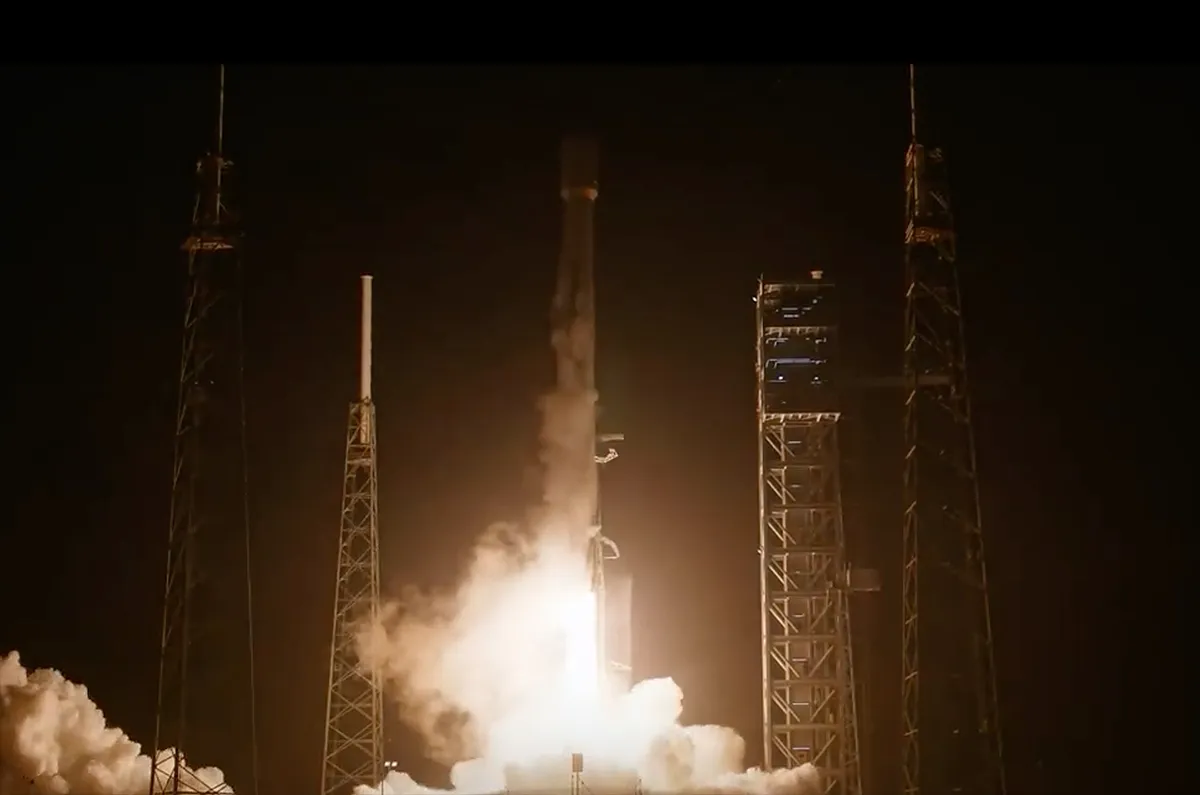
SpaceX added 23 more satellites to its Starlink internet constellation on Saturday night (Dec. 2).
SpaceX는 토요일 밤(12월 2일)에 Starlink 인터넷 별자리에 23개의 위성을 추가했습니다.
A SpaceX Falcon 9 rocket carrying the communications satellites lifted off from Florida's Cape Canaveral Space Force Station at 11:00 p.m. EST (0400 GMT on Dec. 3).
통신 위성을 탑재한 SpaceX Falcon 9 로켓이 오후 11시에 플로리다의 케이프커내버럴 우주군 기지에서 이륙했습니다. EST(12월 3일 0400 GMT).
The Falcon 9's first stage came back to Earth for a vertical landing about 8.5 minutes after launch. It touched down on the droneship "A Shortfall of Gravitas," which was stationed in the Atlantic Ocean off the Florida coast.
Falcon 9의 첫 번째 단계는 발사 후 약 8.5분 후에 수직 착륙을 위해 지구로 돌아왔습니다. 플로리다 앞바다 대서양에 주둔 중인 드론십 'A Shortfall of Gravitas'에 착륙했습니다.
It was the sixth launch and landing for this particular booster, according to a SpaceX mission description.
The 23 Starlink satellites, meanwhile, were scheduled to deploy from the Falcon 9's upper stage into low Earth orbit (LEO) about 65.5 minutes after liftoff.
한편 23개의 Starlink 위성은 이륙 후 약 65.5분 후에 Falcon 9의 상부 단계에서 저지구 궤도(LEO)로 배치될 예정이었습니다.
The Starlink network, which beams internet service down to people around the world, already features more than 5,000 operational spacecraft, according to astrophysicist and satellite tracker Jonathan McDowell.
But that number keeps growing, and likely will far into the future. SpaceX already has permission to deploy 12,000 Starlink craft into LEO, and it has applied for approval for another 30,000 on top of that.
그러나 그 숫자는 계속 증가하고 있으며 앞으로도 그럴 가능성이 높습니다. SpaceX는 이미 12,000개의 Starlink 우주선을 LEO에 배치할 수 있는 허가를 받았으며, 그 외에도 추가로 30,000개에 대한 승인을 신청했습니다.


 Optimisus
Optimisus DogeHome
DogeHome Crypto News Land
Crypto News Land Optimisus
Optimisus Crypto News Land
Crypto News Land Crypto News Land
Crypto News Land Optimisus
Optimisus Cryptopolitan_News
Cryptopolitan_News






















